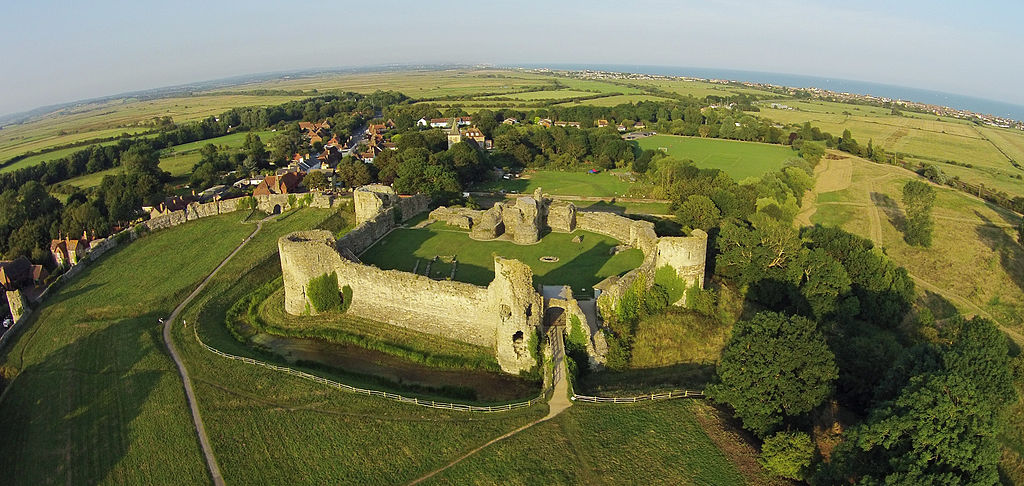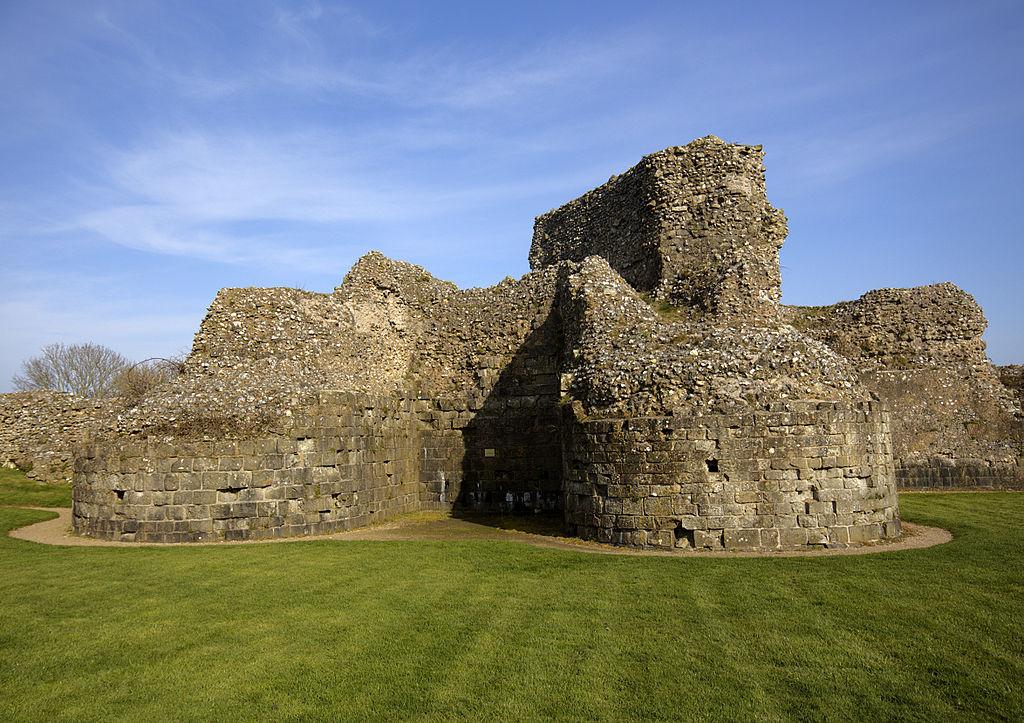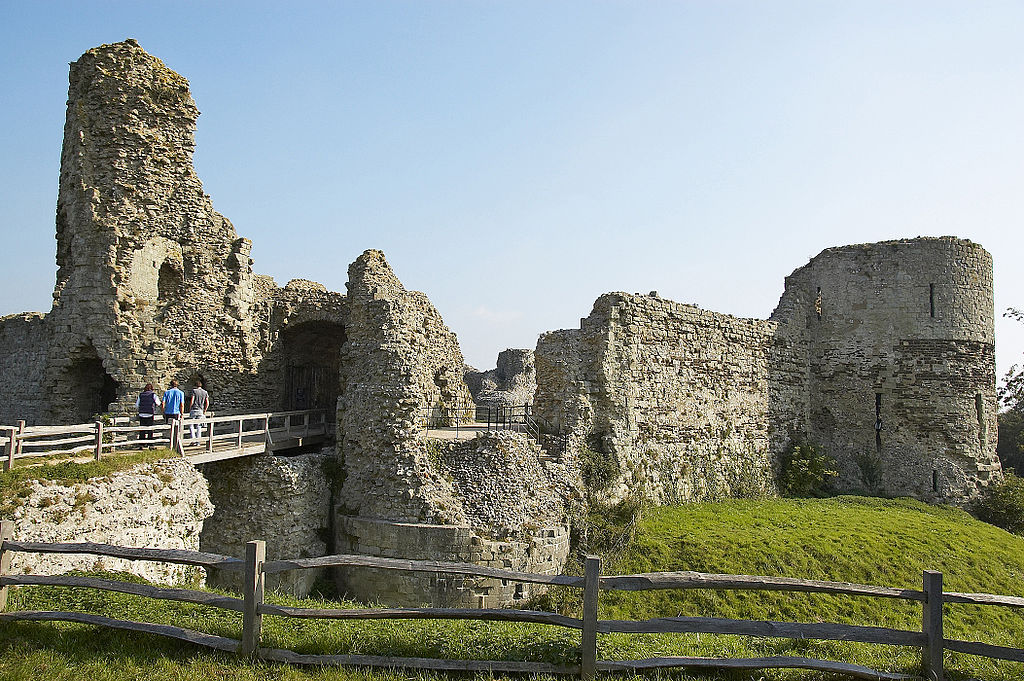In 2018–19 English Heritage undertook a programme of reinterpretation at Pevensey Castle. A new guidebook was written, the museum displays were replaced, reconstruction drawings were commissioned, and teaching kits for schools were prepared. The Roman fort and medieval castle had last seen major interpretative work in the 1990s – with some interventions by Archaeology South East in 2017 as part of a conservation programme.
Historic England carried out a topographical survey of the site on English Heritage’s behalf, complementing the new interpretation. There is a very good report from Historic England, and now two of the team who carried out the fieldwork are peer-reviewed publishing articles. This is excellent news because it brings the new understanding of Pevensey into the academic mainstream. I was the Properties Historian working on the Pevensey project in 2018, and the deeper examination of the site prompted my own paper, which will be published in Sussex Archaeological Collections.
So when the latest SAC volume arrived in December it was exciting to see a piece on Pevensey: “ ‘At Pevensey doth a ruin’d Castle stand’: the development of the post-Norman castle”. I immediately skimmed to see what it says about slighting, which is what my own work focuses on, before then giving it a closer read.

What you need to know
It looks like there are going to be a few peer-reviewed papers resulting from English Heritage’s reinterpretation work at Pevensey. This paper, written by Mark Bowden and Allan Brodie, references another one they’ve written on Pevensey and the Norman Conquest: ‘Ad Pevensey: Pevensey Castle and the Norman Conquest’. In it they will look at how William the Conqueror’s co-option of Pevensey and how it was used to link him to Julius Caesar. In time, I’ll publish a paper on the events of 1216 exploring whether King John slighted the castle. This particular paper, “ ‘At Pevensey doth a ruin’d Castle stand’: the development of the post-Norman castle” focuses on the late 12th and 13th century castle.
While it has a specific focus, the paper includes a very useful summary of the castle’s history before and after the main period under discussion. It’s detailed and well-researched, which is exactly what you’d expect from Historic England, especially if you’ve come across the earlier report.
The article discusses some important topics: the development of the stone castle (ie: particularly the inner bailey) the dating of the keep; phases of building in the inner bailey; and the date of the chapel. There aren’t always firm answers, but that reflects the nature of the evidence. There’s a tantalising suggestion that the keep may have been commissioned by William the Conqueror, but we’ll have to wait for the paper on Pevensey and the Norman Conquest to dig into that topic.

What I’m interested in
At first glance, there was a passing mention of slighting which boiled down to a statement that it is uncertain whether King John’s orders to demolish Pevensey in 1216 were followed. I’ve written a paper on the subject which isn’t out yet and discusses the issue; and if I had to summarise the situation in a sentence that’s pretty close to how I’d do it (though I lean towards the orders not having been followed). The journey to discovery is much more fun than one sentence!
The problem is that the evidence is circumstantial. The inner bailey was largely built in the mid 13th century, after the events of 1216, so a lot of evidence one way or another can’t be accounted for.
One thing in the article did stand out to me: Bowden and Brodie suggest an alternative date for the gatehouse to the inner bailey.
It’s often been dated to somewhere around 1190–1220. Bowden and Brodie differ here. It stood out most in their phased plan of the inner bailey where the gatehouse is described as mid 13th century. It’s a spongey term, but could be anywhere from 1230 to 1270 if we’re being broad. And while numbers aren’t put on that range ‘mid 13th century’ definitely sounds later than 1220.

Why does this matter? If the gatehouse was built around the time of most of the inner bailey, rather than a couple of decades earlier, it means the mid-13th century building programme was even more substantial than already appreciated. For my own interests, whether the gatehouse was built before or after 1216 effects whether we should be scrutinising it for evidence of slighting.
I haven’t fully absorbed the text so my thoughts here are subject to change! The article acknowledges there is uncertainty about dating and is less firm about what the date of the gatehouse may be. The key issue seems to be that the documentary sources don’t specify when it was built (a recurring challenge for understanding castles); it was under royal control for periods and documents record spending but there’s not an obvious date that can be pointed to for the gatehouse’s construction.
The article identifies four phases of construction to the inner bailey, and suggest the gatehouse is later than the south wall and South Tower. Bowden and Brodie note that while “Various authors have suggested that the main gatehouse may date from the 1190s or c1220” (p.146). Anthony Chapman in his study of the gatehouse suggests it is earlier than the curtain wall as the wall abuts the north tower of the gatehouse rather than being keyed into it (p.102); the south tower hardly survives above basement level so it’s not possible to see if there was a similar arrangement there. Chapman assumes it would have been the same there, but Bowden and Brodie are less sure. The main issue seems to be that the “work of the 1190s seems to have been focused on the postern gate” (p, 146) so they don’t think the main gatehouse would be that early, and instead suggest the enclosure was built clockwise from the postern gate, and so the south curtain wall predates the gatehouse.
What makes the situation more complicated is that stylistically, Pevensey’s gatehouse is typical of the late 12th or early 13th century. If it dates to the 1190s it’s an early example of gatehouse two twin D-shaped towers. A similar layout was used at Beeston, Chartley, and Bollingbroke in the 1220s, so Pevensey’s could post-date 1216 quite happily. Architectural historian John Goodall, who wrote the 1999 guidebook, suggests a date of around 1190. Trying to put a narrow date on a particular feature is tricky, and there are good reasons to use terms which span decades or even centuries.
In my paper on the purported slighting of Pevensey, I discuss the gatehouse as one of the possible features extant in 1216. The evidence for slighting is equivocal, so to be honest adding in a bit more ambiguity doesn’t throw off my conclusions!
Most importantly, it’s encouraging to see new research into Pevensey get published. It’s such a rich site, with so much to explore and I’m excited to see Bowden and Brodie’s other papers.